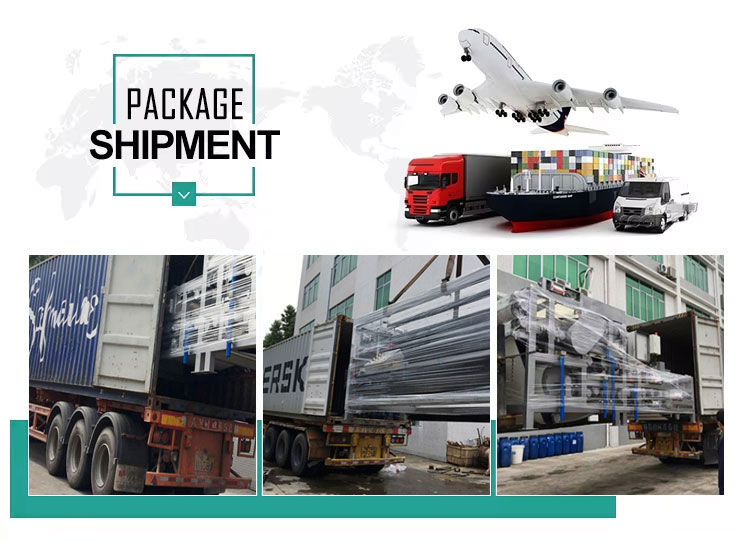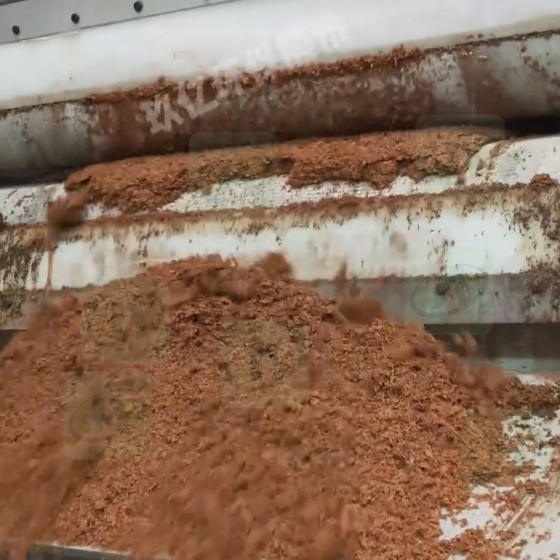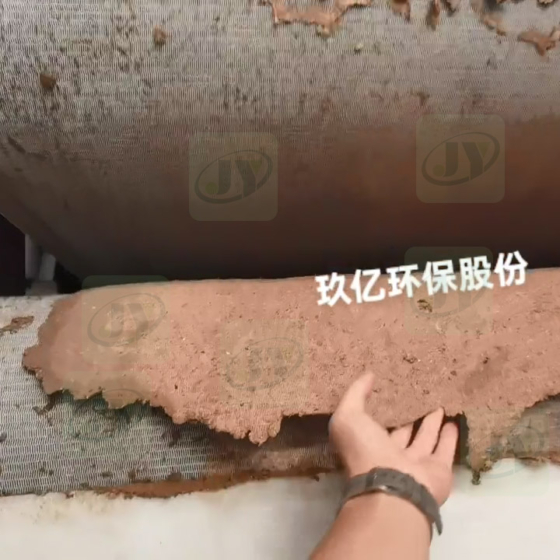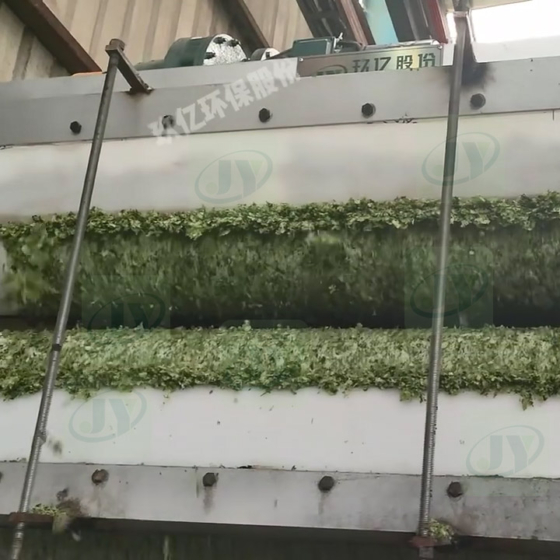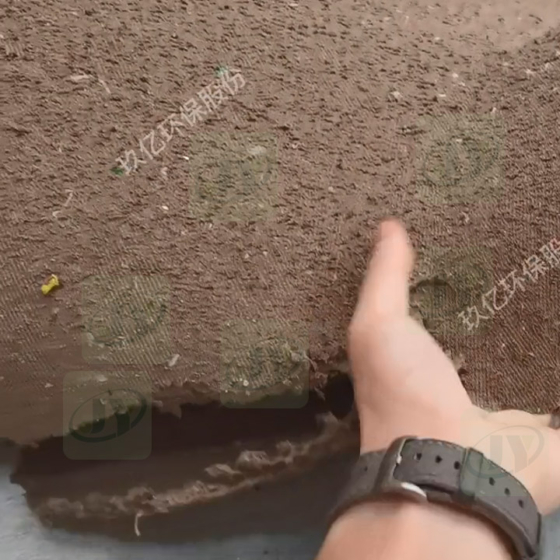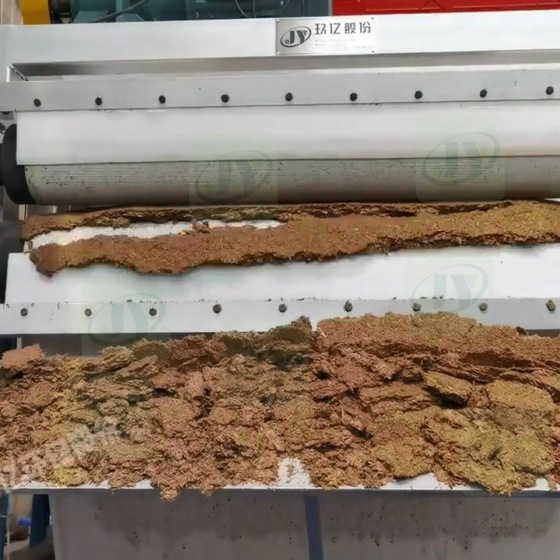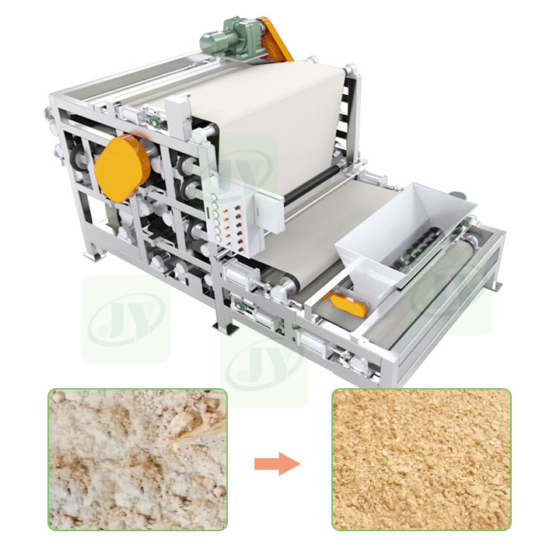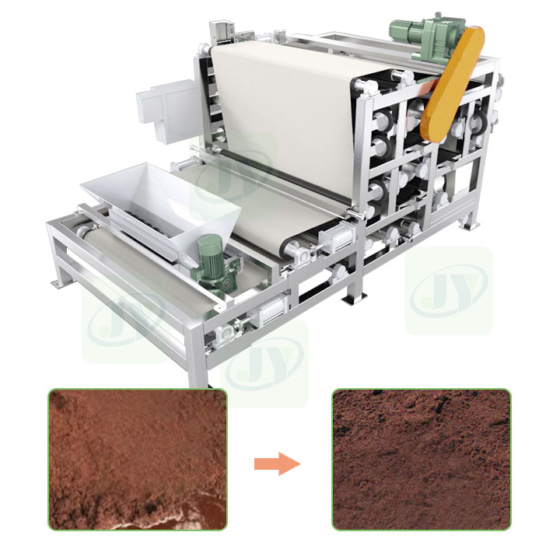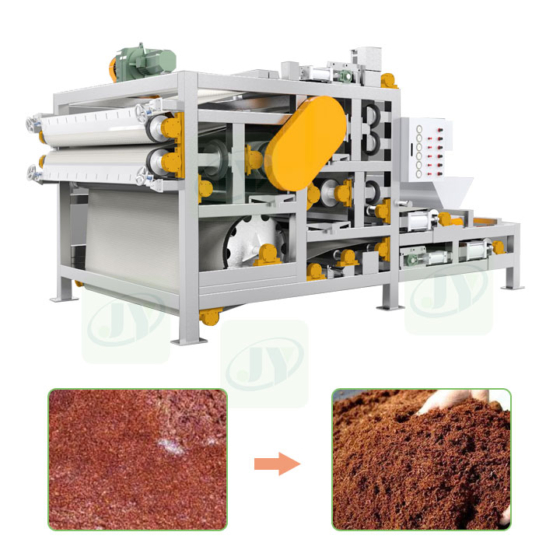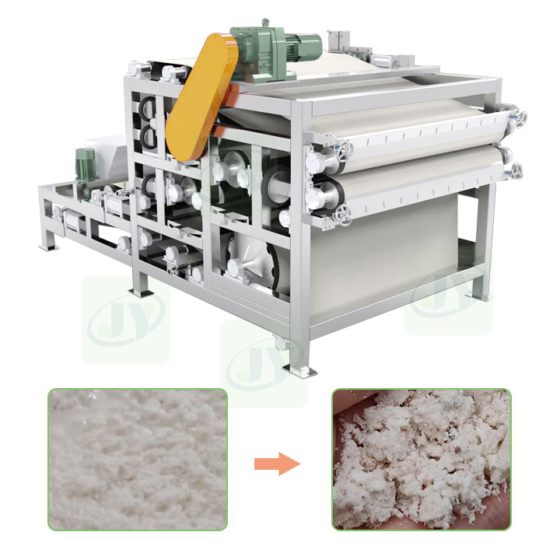Bark Residues Belt Dewatering Machine Equipment Introduction
Characteristics of Bark Residues:
Bark residue, a byproduct of tree processing and landscaping, contains 40%-60% fiber, 75%-85% water, and 50%-70% porosity, with composition varying by tree species (broadleaf trees suit substrates, coniferous trees suit fuel). It originates from wood processing (core material, fewer impurities), municipal greening (scattered, more impurities), and forestry logging (high transport costs). This resource serves as biomass fuel (replacing fossil energy), agricultural cultivation substrate or soil improver (after decomposition), environmental adsorption material, feed supplement, or packaging material.
The belt filter press employs a “low-tension filter belt + graded gradual pressing” design. The filter belt, crafted from highly breathable, low-wear polyester or nylon, prevents fiber winding or breaking. During pressing, the system progressively increases pressure through stages: gravity pre-dewatering (draining free water), wedge-shaped low-pressure extrusion (initial shaping), and multi-roller high-pressure extrusion (deep dewatering).
Advantages of belt press dewatering machine:
The structure and working principle of the belt filter press (gravity pre dewatering+low-pressure dewatering+high-pressure dewatering) can accurately match the material characteristics of high fiber content, fluffy and porous bark residue, and fluctuating moisture content.
Bark residue is rich in wood fibers and often contains fine bark blocks and fiber bundles. Traditional filtration equipment is prone to clogging due to narrow feed ports and small gaps between filter cloths.
The belt press dewatering machine adopts a wide filter belt and a large-diameter feeding hopper, combined with a fabric feeder in the feeding area, to evenly spread the bark residue on the filter belt, avoiding fiber accumulation and blockage.
The subsequent use of bark residue (such as biomass fuel, cultivation substrate) requires high integrity of fiber structure. If the pressure is too strong or the mechanical compression is severe during the dehydration process, it is easy to cause fiber breakage and texture fragmentation.
The bark residue after dehydration using a belt press dewatering machine still maintains a complete fiber bundle structure, meeting the requirements for material morphology in subsequent processing.




Dehydration Principle Of Bark Residues Belt Dewatering Machine
Transport materials with a moisture content of 80% -90% to the hopper of the dewatering machine through a conveyor, and evenly spread the materials on the filter belt through a feeder. The filter belt moves with the operation of the equipment, and the limit plate scrapes the material layer flat. At the same time, control the thickness of the material to make it completely uniform and consistent.
Then, two fully tensioned circular filter belts are clamped between the material layer, driven by the driving roller. The material is continuously and repeatedly squeezed through the pre press dehydration zone, low-pressure zone, and three sets of pressure roller high-pressure zone to remove a large amount of moisture.
Adjust the extrusion pressure and feeding speed according to different material characteristics to meet customers’ requirements for material moisture.
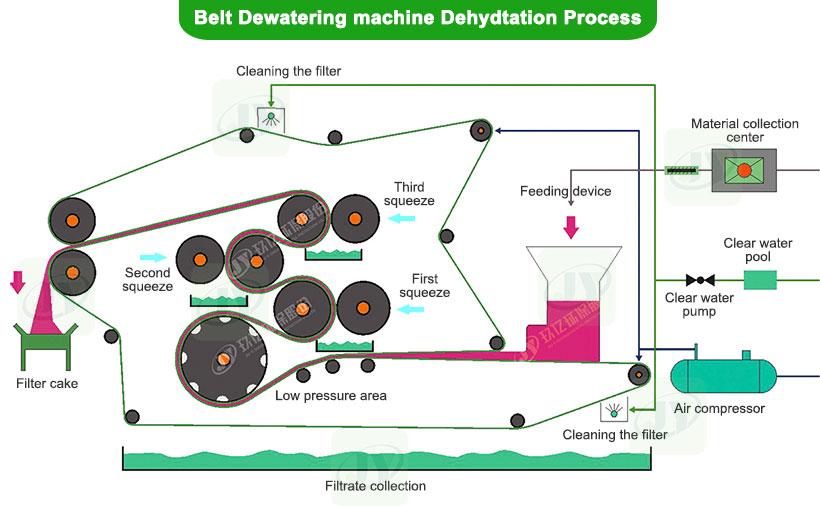
Belt Press Dehydrators Technical Parameter
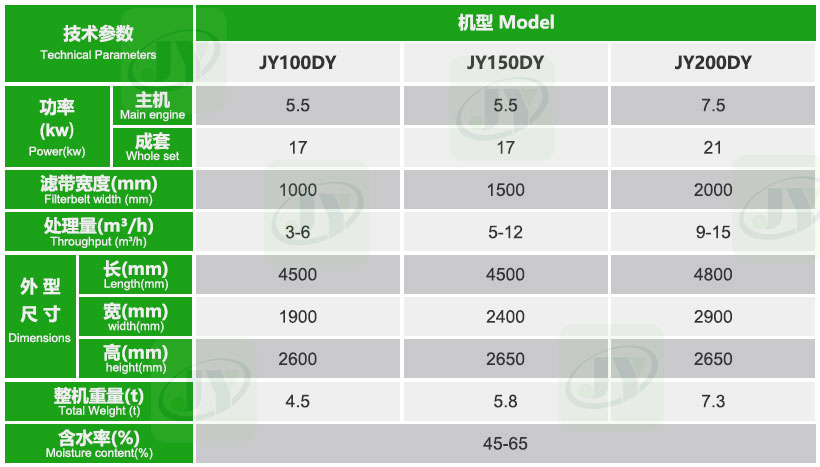
JIUYI Brand Belt Press Dewatering Machine Feature
JIUYI dehydrators is a new generation of high-efficiency press dewatering equipment independently developed by us based on years of material dewatering experience and combined with similar dewatering equipment technologies at home and abroad. It has successfully solved the problem of continuous large-scale and deep dehydration of different materials.
1. Low power consumption, low noise, high production efficiency.
2. The machine adopts an ultra long filtering zone, combined with strong pressure rollers for multiple dehydrations, resulting in high dehydration efficiency and large processing capacity.
3. Automatic filter cloth cleaning system, no manual intervention required.
4. Adopting an automatic fabric device, the feeding is smooth and reliable.
4. Select high-quality anti-corrosion materials and components for processing and manufacturing.
5. Advanced and reliable filter belt correction and tensioning device can ensure long-term stable operation.
6. Variable frequency drive control, adjustable production speed.
7. It can run continuously for 24 hours, with high automation, simple operation, and easy maintenance.
8. Advanced structural design with a wide range of applications.
9. The driving roller and squeezing roller of the dehydrator are coated with high-quality materials.
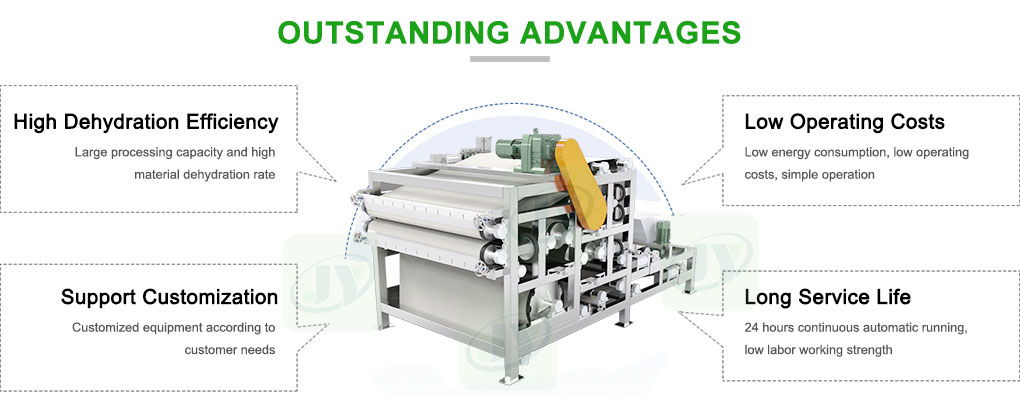
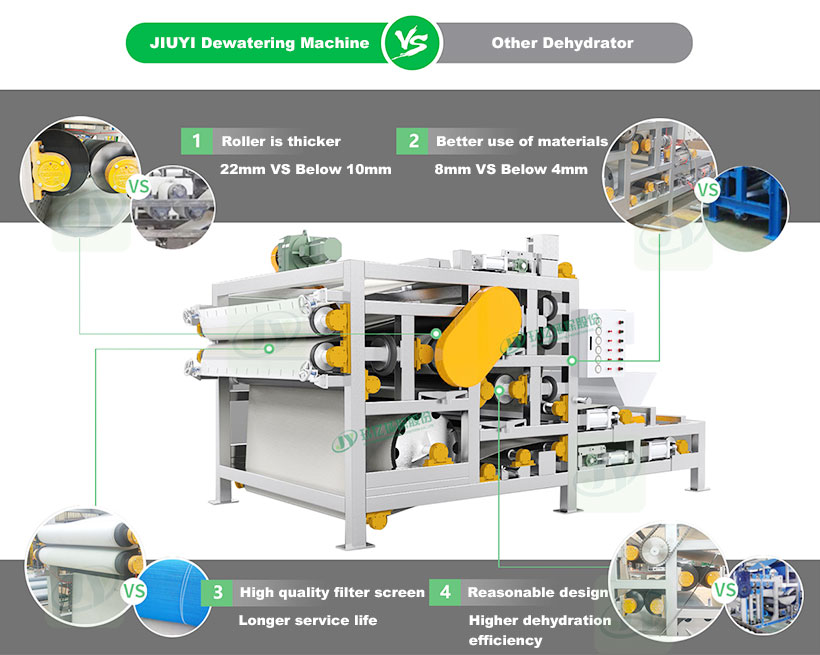
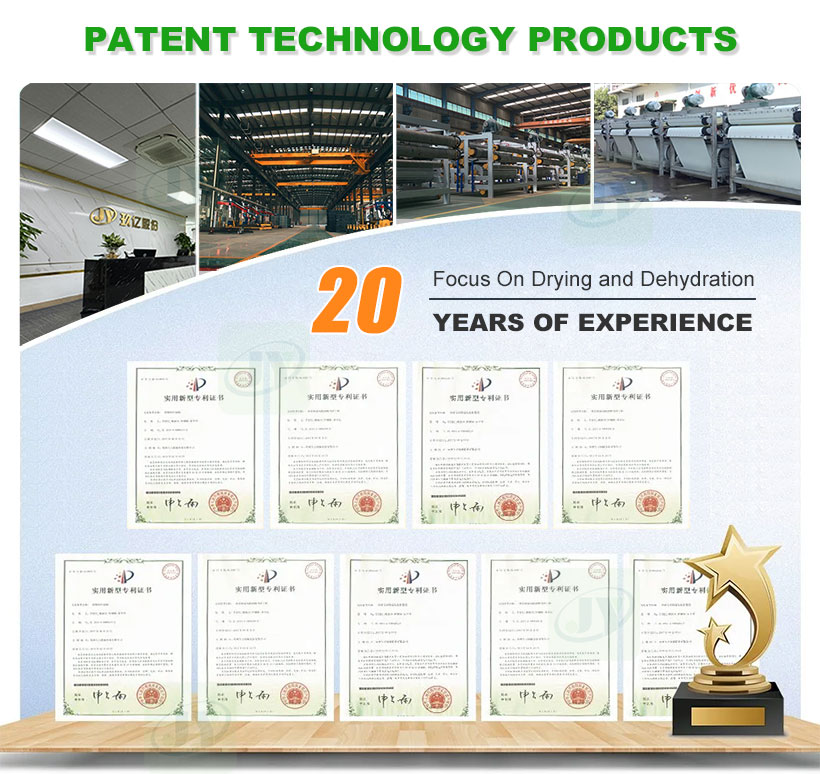
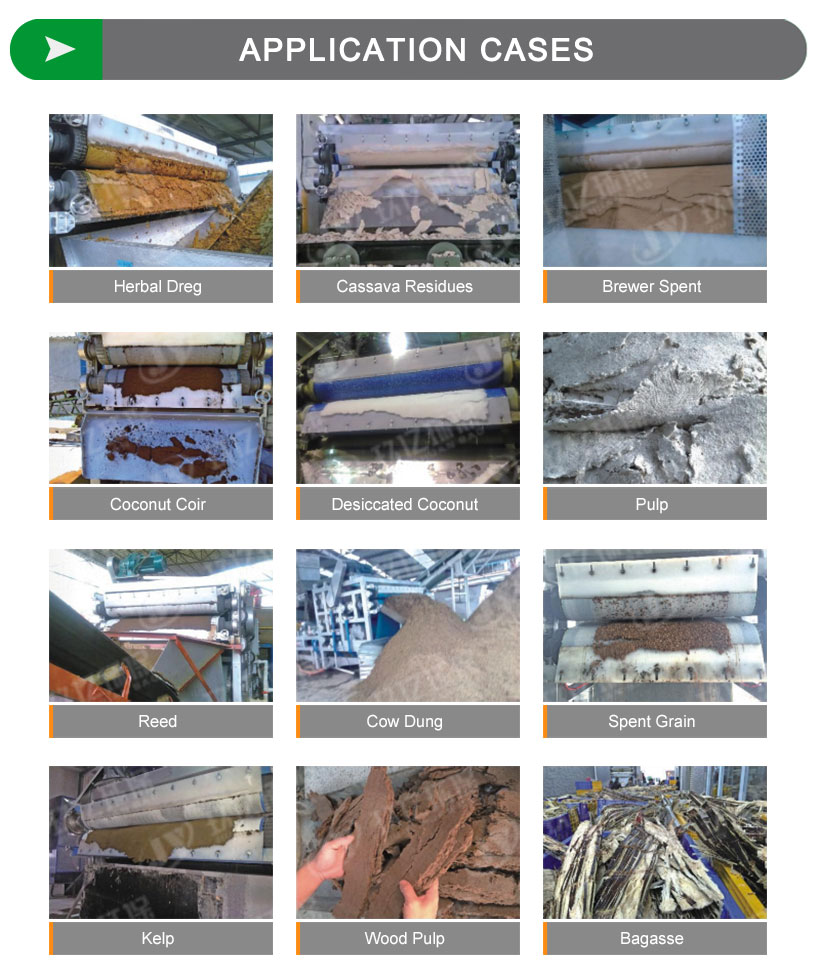
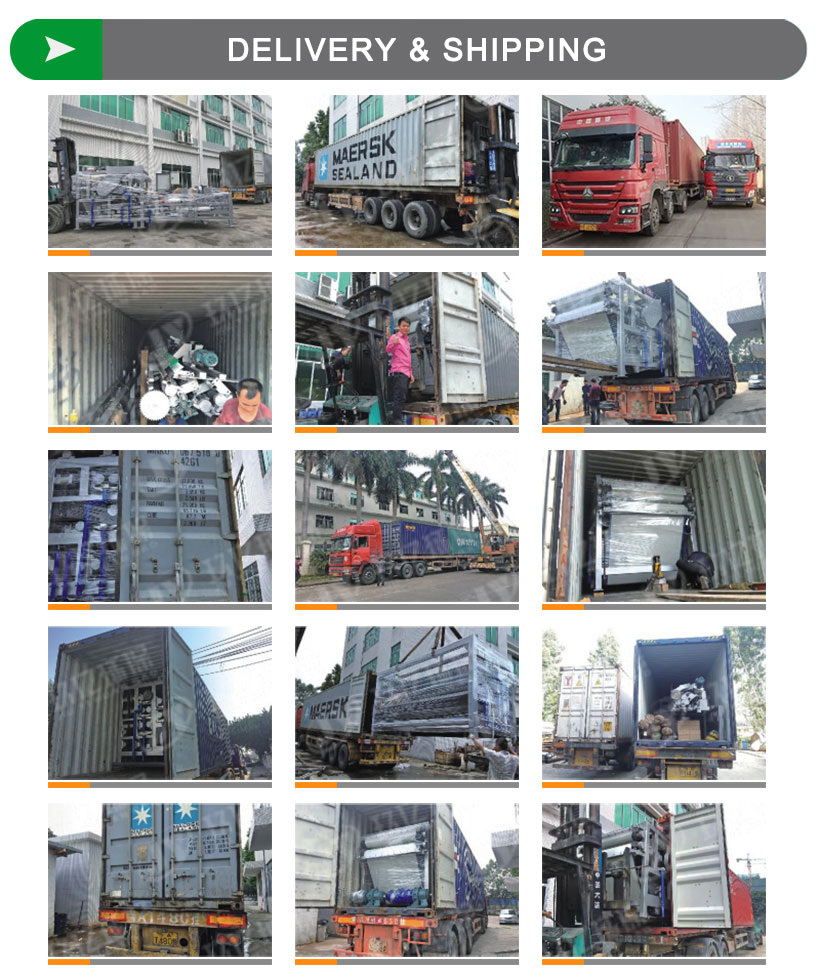
 Belt Dehydrator, Belt Press Filter, Cocopeat & Cassava Residues Dewatering Machine Manufacturer In China – JIUYI Dehydration Equipment
Belt Dehydrator, Belt Press Filter, Cocopeat & Cassava Residues Dewatering Machine Manufacturer In China – JIUYI Dehydration Equipment


